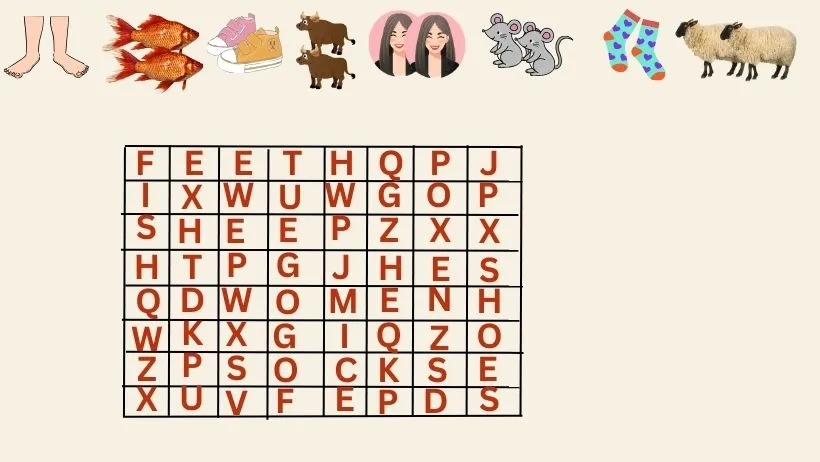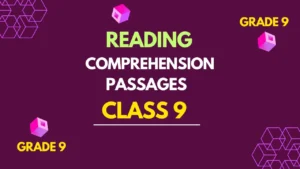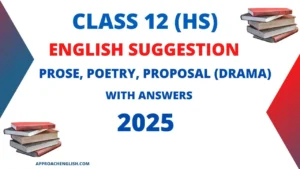Discover the world of singular and plural forms in Class 3 English with this comprehensive worksheet and answers guide.
In Lesson 2, we will explore singular and plural Class 3 Worksheet with Answers of nouns providing you with a worksheet and answers to help your understanding. Get ready to enhance your language skills!
Singular and Plural for Class 3
Singular refers to a form of a noun representing one person, place, thing, or concept, while plural refers to the form representing more than one of those.
Examples:
- Singular: “The cat is sleeping.” (referring to one cat)
- Plural: “The cats are playing.” (referring to multiple cats)
Other Lessons Class 3 English
Regular Plural and Irregular Plural
Regular plurals are formed by adding -s or -es to nouns to indicate more than one of them, while irregular plurals do not follow this rule and have unique forms i.e., to change their inside vowels.
Examples:
- Regular Plural: “The cat chased two mice.” (cat becomes cats, adding -s)
- Irregular Plural: “The child has two feet.” (child becomes children, not following the -s rule)
Singular and Plural Class 3 Worksheet 1
A. Identify whether the following nouns are singular or plural, and if plural mention if they are regular or irregular.
1. Dog ___________
2. Cats ___________
3. Child ___________
4. Children ___________
5. Book ___________
6. Books ___________
7. Mouse ___________
8. Mice ___________
9. Car ___________
10. Cars ___________
11. Baby ___________
12. Babies ___________
Irregular Plurals
◼ Some nouns have a different form in the plural. They have irregular plurals.
| Singular | Plural |
| foot | feet |
| child | children |
| man | men |
| woman | women |
| tooth | teeth |
| mouse | mice |
| ox | oxen |
Singular and Plural Class 3 Worksheets 2
B. Match the singular nouns in column A with the correct plural nouns in column B.
| Singular | Plural |
| 1. woman | a. |
| 2. mouse | b. |
| 3. louse | c. |
| 4. goose | d. |
| 5. tooth | e. |
| 6. foot | f. |
| 7. child | g. |
| 8. ox | h. |
Some singular nouns remain the same when they become plural.
| Singular | Plural |
| deer | deer |
| fish | fish* |
| sheep | sheep |
| bison | bison |
| aircraft | aircraft |
*Fishes is also used as the plural of fish.
Singular and Plural Class 3: Worksheets 3
C. Read each pair of sentences and look at the words in bold. Underline these words when used as singular nouns and circle them when used as plural nouns.
1. I see a deer with a broken leg. Two other (deer) are standing near it.
2. Most bison have long and sharp horns. But the bison in the zoo has no horns.
3. The farmer has only one black sheep. All the other sheep are white.
4. There is a big fish in the basket. But many small fish jumped back into the water.
5. There are many antelope in the woods near my house. An antelope came into my garden one day.
6. Three aircraft are standing in a line. Our aircraft is the second one.
Words Used in the Plural
Two groups of nouns are used in the plural-
◾ clothes (like trousers, with two legs)
◾ tools (like scissors, with two parts)
| Singular | Plural |
| glasses (spectacles) | glasses (spectacles) |
| trousers | trousers |
| jeans | jeans |
| scissors | scissors |
| pyjamas | pyjamas |
| shorts | shorts |
Worksheets 4
D. Complete these sentences with the words in the box.
| Box: spectacles, sunglasses, scissors, socks, trousers, pyjamas |
1. Grandfather wears his _________ only while reading.
2. I wear white _________and black shoes to school.
3. We use a pair of _________to cut cloth and paper.
4. If the iron is too hot, it can burn a hole in my new cotton _________
5. I wear my _________at bedtime.
6. _________ help to protect the eyes from the sun.
Worksheets 5
E. Look at these pictures and complete these sentences.
1. The cat cannot catch the ________ .
2. Grandmother has hurt her ________
3. The ________ mooed loudly.
4. You must brush your ________ twice a day.
5. The ________ are blue in colour.
6. ________ cackle noisily.
7. The ________ are eating ice-creams.
8. Some ________ are playing in the pond.
Worksheets 6
F. Read this passage. Strike out the incorrect plurals and write the correct plurals above them.
Suddenly, there is an earthquake. Amit shoes quickly puts on his shoe and runs out of the house. Grandfather finds it difficult to stand on his feet. Anil helps him to find his glass before
going out of the house. In the nearby woods, the deer are standing still. The mouse are scuttling out of their holes. Many man, woman and child are running out of their houses. Anil clenches his tooth in fear as two sheep and an ox start running around wildly in a nearby field.
Worksheets 7
G. Look at these pictures. Find these plural nouns in the word grid and color those boxes yellow.

FAQs on Singular and Plural Class 3
Why do we need to learn singular and plural forms?
Learning singular and plural forms is essential for clear and effective communication. It helps us convey the correct quantity of objects or subjects.
Are there any irregular plurals I should be aware of?
Yes, some words have irregular plurals that do not follow the standard rules. For example, “man” becomes “men,” and “woman” becomes “women.”
Can a word be both singular and plural?
Yes, some words remain the same in both singular and plural forms, such as “deer” and “sheep.”
How do I know when to use “is” or “are” with singular and plural nouns?
Use “is” with singular nouns (e.g., “The book is on the table”) and “are” with plural nouns (e.g., “The books are on the table”).
Can I use singular “they” for gender-neutral language?
Yes, singular “they” is increasingly accepted for gender-neutral language and inclusivity.







